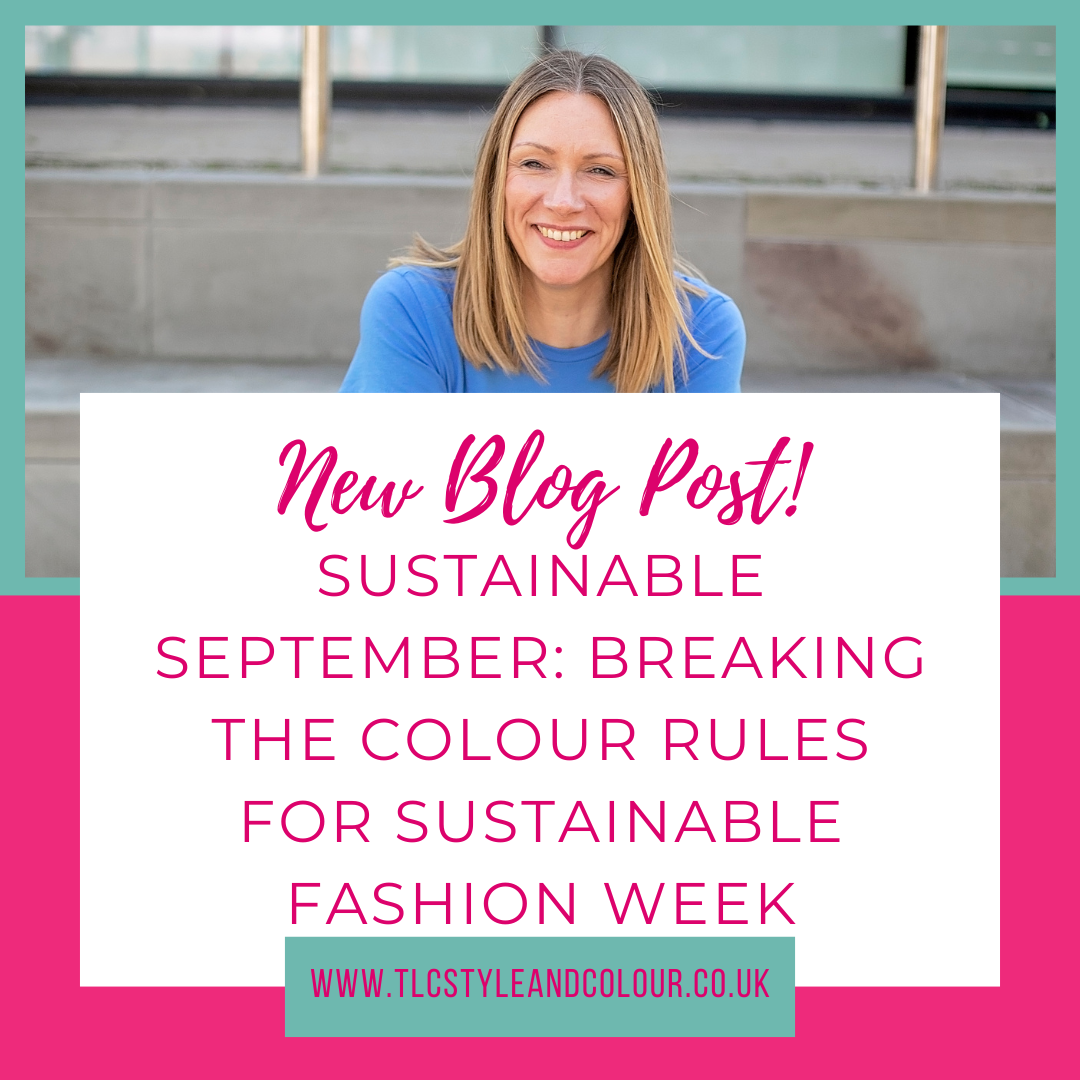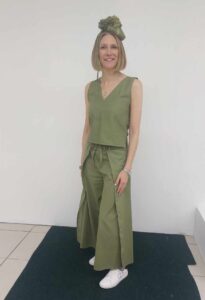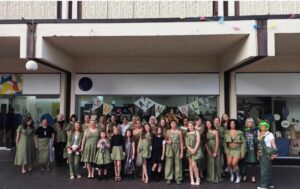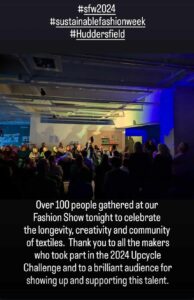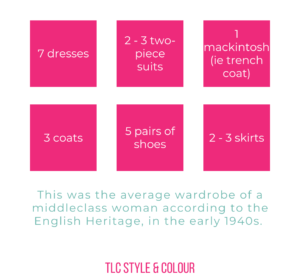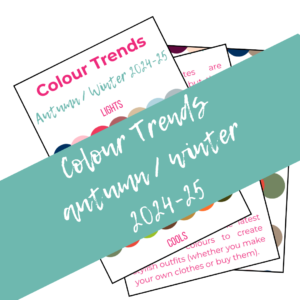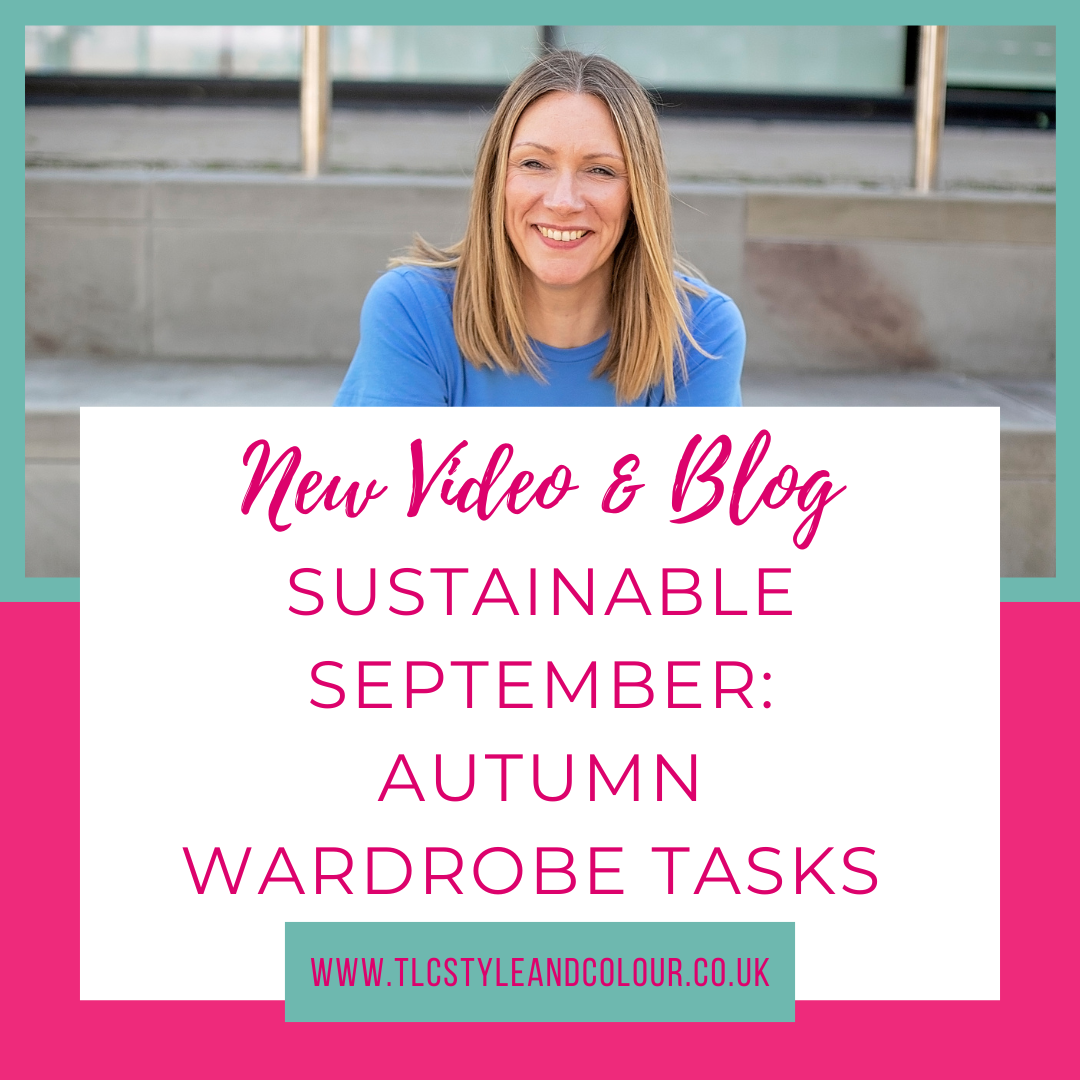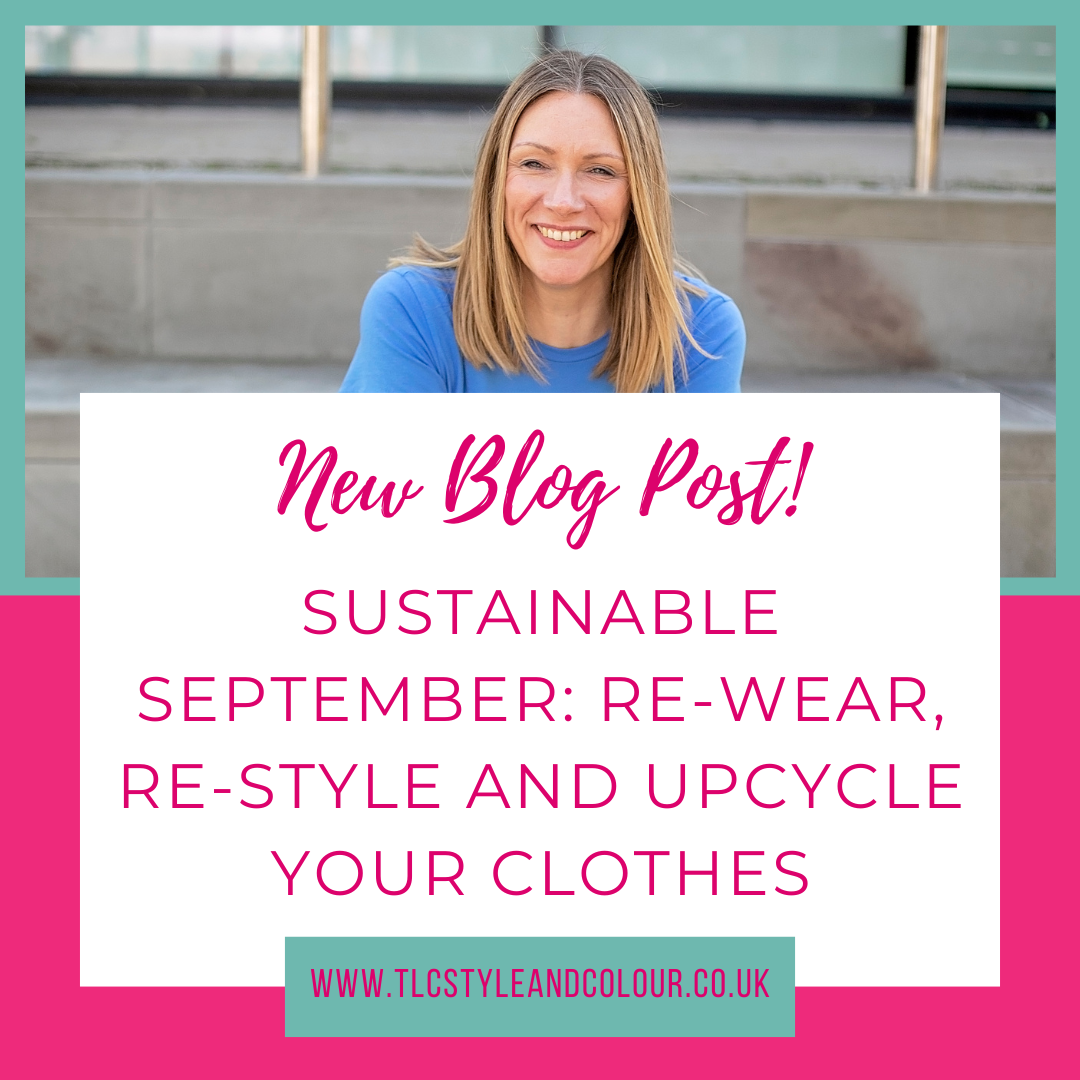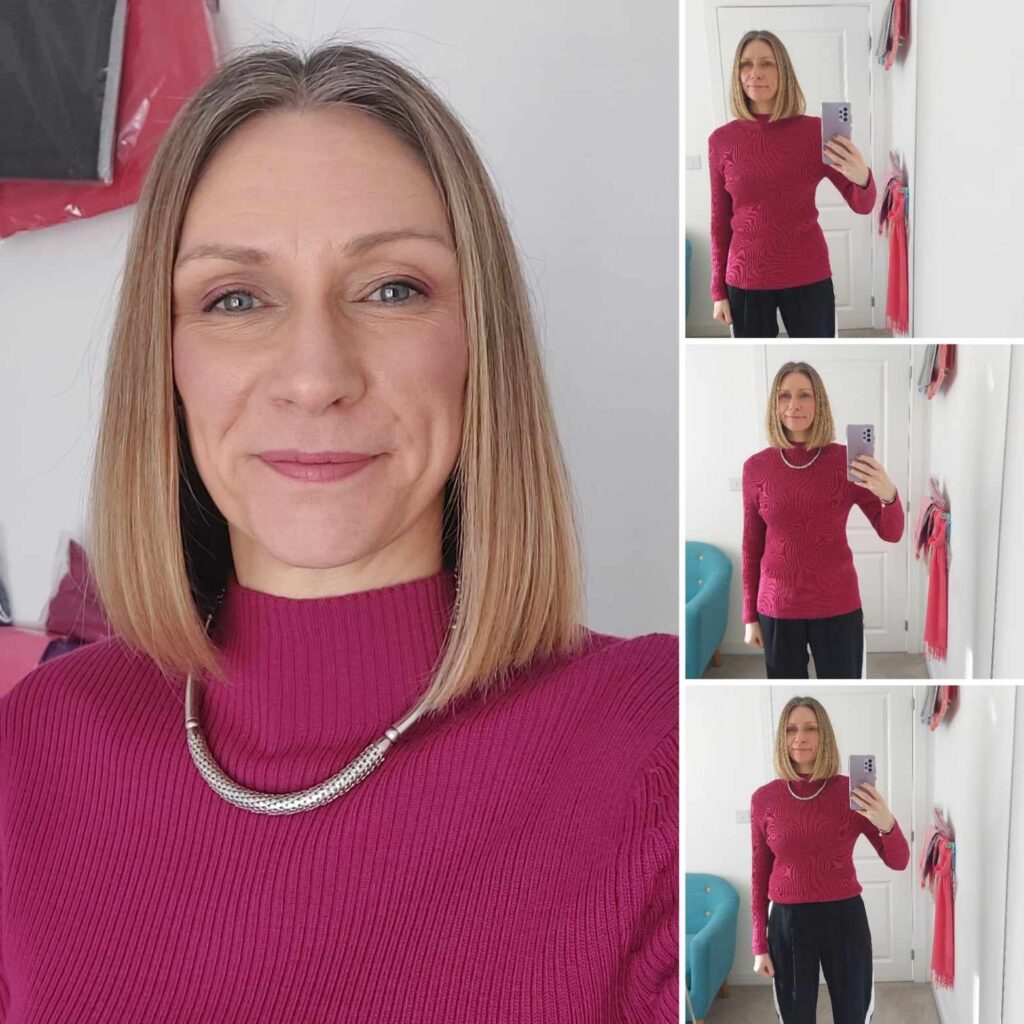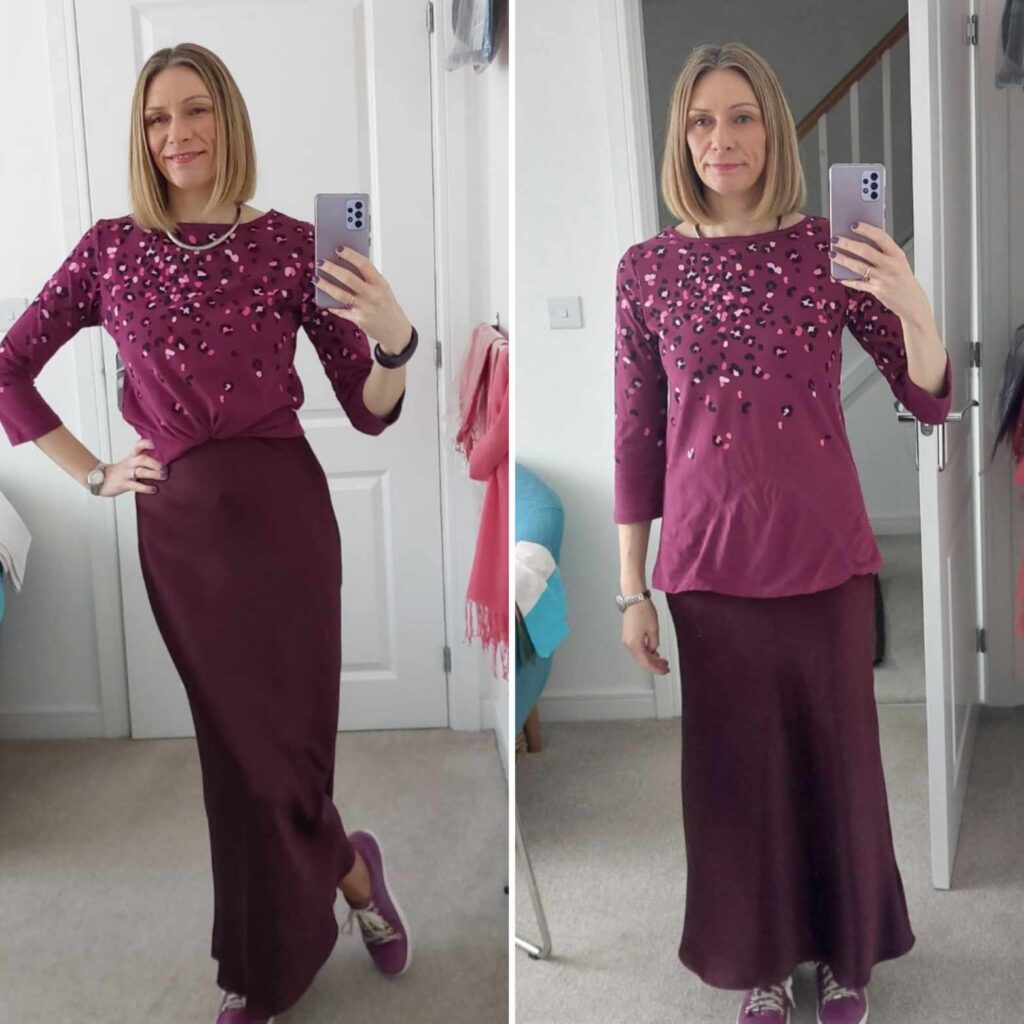Continuing the sustainable September theme with the last one in my series.
Last week, I talked about choosing quality over quantity and how to fill the gaps you have in your wardrobe. Revisit it here.
We often have things in our wardrobe which aren’t quite right and I encourage all my clients to see if you can make them work! It can be a simple tweak, or something more drastic!
Textile waste is a huge environmental contributor. It’s not just clothes that don’t get recycled, but other household textiles too.
Sustainable fashion week upcycle challenge
Having recently learnt how to sew, I was inspired to take part in a campaign run by Thread Republic. Based in Huddersfield, they were a hub for Sustainable Fashion Week. IKEA had donated some recalled duvet covers and they wanted people to transform them into garments to model at their sustainable fashion show on 24th September.
Wanting to test my new sewing skills out and feeling all Great British Sewing Bee, I agreed to take part.
It was simple – transform the duvet cover into a wearable garment!
Breaking my own colour rules for this challenge, as it was a yellow-based, muted green – much warmer than the greens that suit me. Not letting that deter me, I knew I’d be able to work with it by keeping the colour away from my face! Something that’s much easier when you know what suits you and how to make it work!
I decided on a co-ordinating top and trousers. The trousers were inspired by a pair I’d bought in Thailand many years ago. Paired with a simple v-neck top to show off the wrap-around design of the trousers. For the making of the top, I found a pattern online which I adapted to fit my shape. I used my existing trousers as a broad template to make the trousers, again with a few adaptions.
The duvet was made from cotton which is a fabric which doesn’t drape that well. It’s good to sew with as it’s stiffer and doesn’t stretch or move when sewing. One side had a fluffy trim, which falls off when washed, hence it being recalled, so I decided to work with the plain side.
Sustainable fashion show
For the first time ever, I got to strut my stuff and strike a pose ! The Sustainable Fashion Show was a sell-out, with an audience of over 70.
I joined over 30 makers on the runway. It was truly fascinating to see how many different outfits had been made and how people interpreted the brief.
Our styles make us all different and our clothes are simply a method for us to express ourselves.
I’m proud to have taken part and create something from an old duvet cover!
Here’s a link to a little video of me strutting my stuff on the runway: https://www.instagram.com/tlcstyleandcolour/reels/
A few pics from the evening:
- Me in my outfit (the hat was made my another maker and lent to me!)
- A group shot of all of us outside Thread Republic I Huddersfield
- Pretty sure this is me…
Find more information about Thread Republic and get involved here: https://www.threadrepublic.co.uk/

